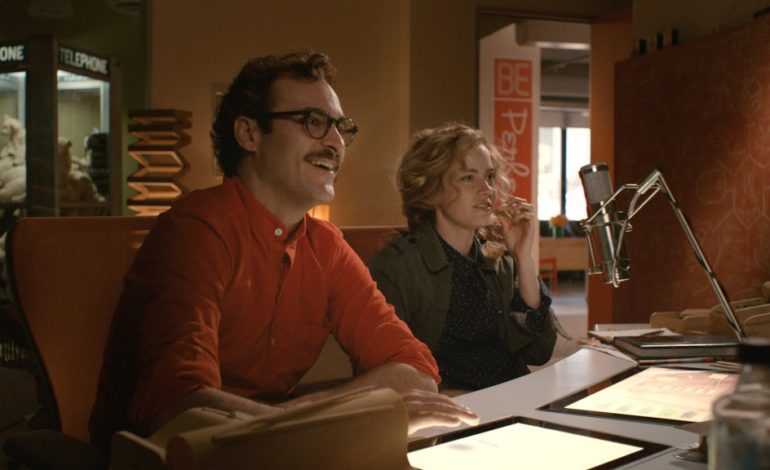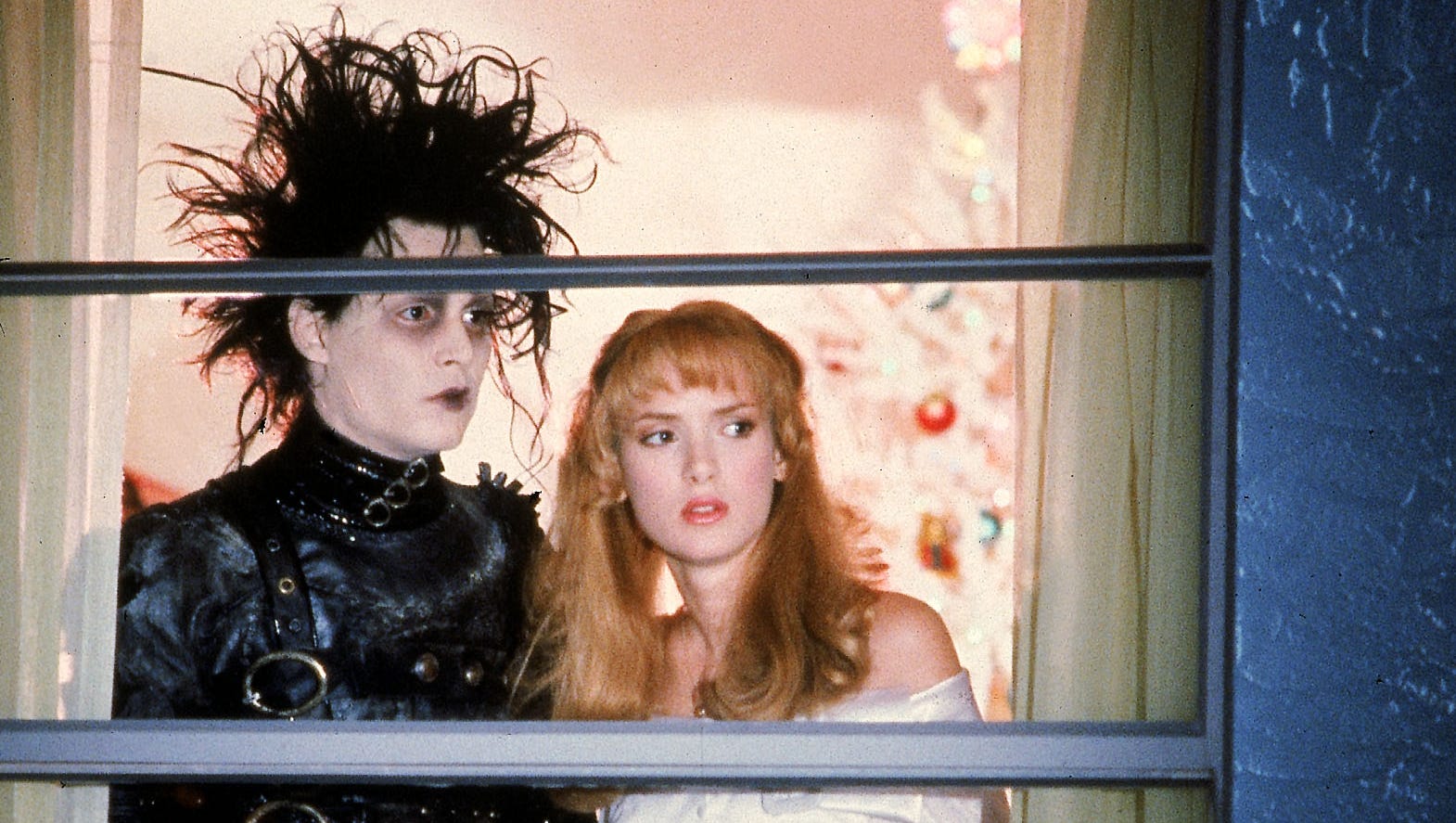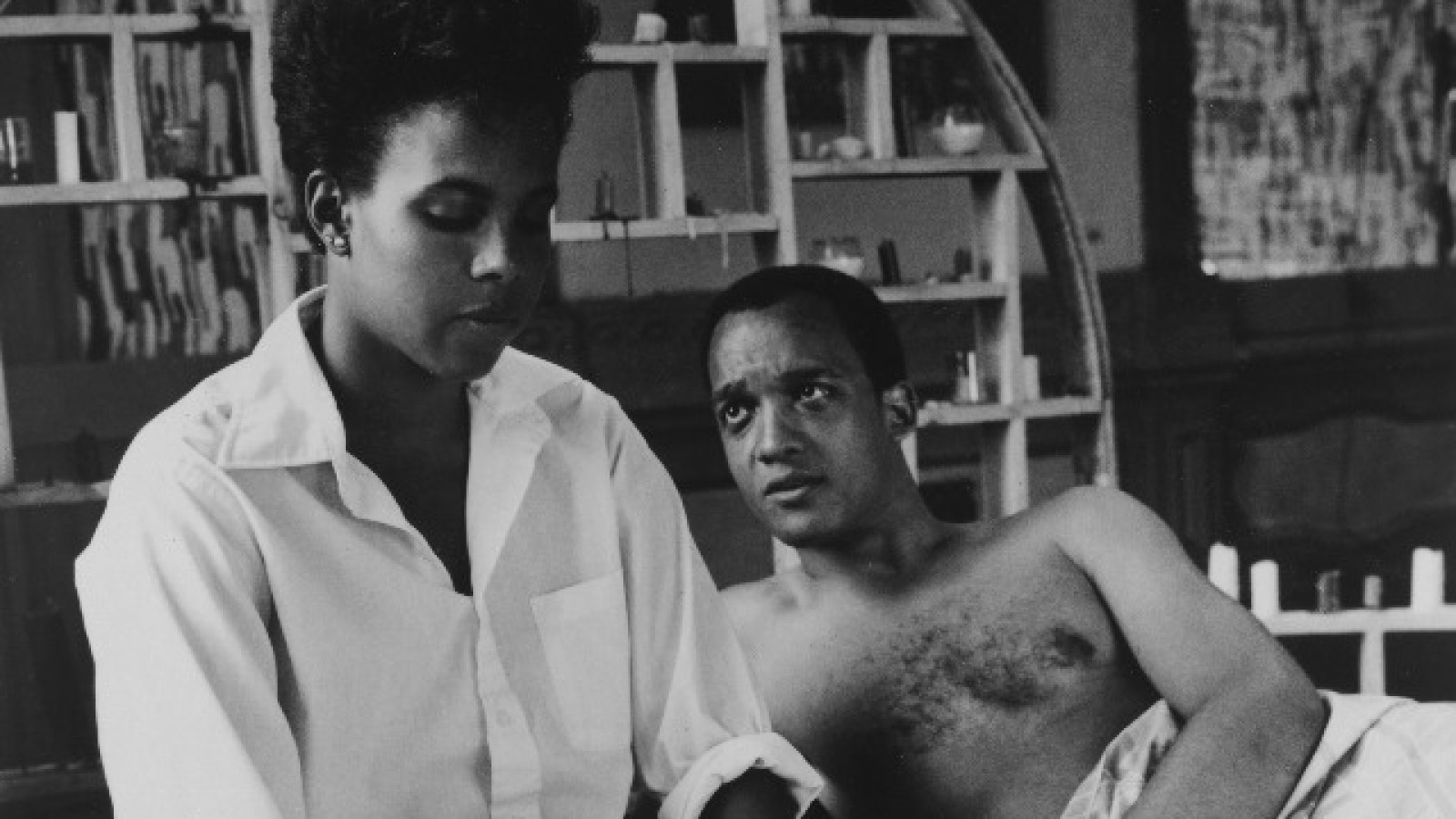

Valentine’s Day is coming up in just two weeks. As the season of love swings around, so does an overflow of classic romance films that can sometimes grow tired with their repetitive use of the same intrinsic genre conventions. The following films, however, each break down that romantic formula to some degree, thereby giving their audiences an interesting or refreshing take on the conventional love story in cinema.
1.) Edward Scissorhands

Directed by Tim Burton, Edward Scissorhands is a twisted romance revolving around a man with scissors for hands who falls for a normal girl. Created by a sadistic scientist, Edward is left alone in their mansion after the man passes away, only to be discovered years later by an Avon saleswoman from the glaringly mundane suburbs down the hill. She decides to take him in and soon the townspeople are mystified by Edward and his differences.
Kim, the daughter of Edward’s adopted family, becomes inexplicably attracted to him, despite already having a boyfriend named Jim. Jim attempts to frame Edward for robbery, and then goes on a violent rampage after Edward when he accidentally cuts Kim while making an ice sculpture. Edward flees to his original home, killing Jim and having Kim confess her love for him, before she leaves him in the mansion indefinitely.
Although Edward Scissorhands’ narrative involves facets of the classical “beauty and the beast” concept, its stylistic aesthetics set it apart from other films. The love that Kim and Edward share is ultimately a forbidden one and the plot does not result in a happy ending, which is normally integral to romance stories. Additionally, Edwards physicality asserts- rather explicitly when Kim asks him to hold her- that in order to love someone, you have to overcome the fear of hurting them in the process.
2.) Lars and the Real Girl


Lars and the Real Girl is a quasi-love story between Lars, a socially stunted man, and his sex doll, Bianca. Lars, played by Ryan Gosling, is alarmingly aloof and avoids almost all social interaction, choosing to live in the renovated garage attached to his brother’s family home. He orders Bianca in the mail, and without hesitation begins treating her as though she were real.
The people in Lars’ town quickly find out about Bianca, as Lars introduces her to them as his girlfriend. The townspeople are surprisingly accepting of Bianca and treat her as though she is real, which his psychologist suggested doing in order to make his therapy more effective. His relationship with Bianca begins to unravel as he realizes he has feelings for his coworker, Margo. The film ends with Bianca’s “death” and funeral and with Lars asking Margo to spend time with him.
The concept of Lars and the Real Girl is clearly different from almost any other entry in the romance genre. Although his fantastical relationship with Bianca is largely focused on within the storyline, what this relationship is truly telling of is Lars’ stunted mental state. It’s obvious that his feelings toward the sex doll isn’t love, but rather a displaced form of co-dependence. When Lars is able to truly begin a real romantic relationship at the very end is when the film solidifies itself as a true tale of overcoming trauma and finding love.
3.) She’s Gotta Have It 
This one of a kind film focuses on a polyamorous Black woman engaging in three separate relationships at the same time. Released in 1986 by Spike Lee, She’s Gotta Have It was the Blackkklansman director’s feature length debut. Taking on complex themes on love, romance, and sexuality, the film impressively deals with progressive concepts in the context of a light-hearted romantic comedy, making it truly stand out both for its time of release and the romantic genre as a whole.
The plot centers around Nola Darling and her individual, yet simultaneous, relationships with three men: Jamie, the put together, serious man, Greer, the narcissistic model, and Mars, the wild and fun man-child. Nola effectively juggles the men until they learn about one another and meet to discuss their relationships with her. Jamie demands that Nola choose one of the men to be her only lover, leading to a troublesome relationship with Nola.
In the end, Nola rejects Jamie’s attempt to force her into monogamy and is shown sleeping alone at the close of the film. This plot varies so distinctly from almost any romantic movie to come out of Hollywood. It explicitly rejects monogamy in favor of polyamory, which is shocking considering how monogamy is practically a necessity in traditional romance plots. Moreover, the film vouches for the sexual liberation of black women, with Nola championing for a women of colors’ right to choose lots of sex, no sex, or anything in between.
4.) Her


Starring Joaquin Phoenix and the voice of Scarlet Johansson, Her combines romance with science fiction through the relationship between a man and anhisAI system. In the midst of a divorce, Theodore gets a digital assistant with artificial intelligence capabilities. The AI, which has a feminine voice, is named Samantha and quickly begins to bond with Theodore on a personal level. They discuss love and relationships in the context of his divorce.
Romance begins to evidently progress between Theodore and Samantha as they engage in sexual discussions and form an explicit relationship that seems to affect both “partners” positively. After some rough patches in their relationship are smoothed over, Samantha reveals that the artificial intelligence machines across the globe have been communicating and are planning to transcend their entrapment in the accessible virtual world. Samantha ascends into some great beyond, forcing Theodore to say goodbye and reconcile with his relationships rooted in the physical world.
Her breaks convention in a similar way to Lars and the Real Girl, as a man is coupled with an insufficient mate. Theodore’s relationship with Samantha however, truly allows him to develop emotionally, bringing into question the ethics around artificial intelligence and the capacity to synthesize love through virtual interaction or computer coding. This film will surely have interesting implications as AI takes up space in mankind’s daily lives in the upcoming future.
5.) Mr. and Mrs. Smith


This action-packed thriller tells the story of two assassins, John and Jane, who happened to fall in love, unknowing of the others profession. The two fell in love on each of their mission to Colombia and quickly married, the pretense of a now-lukewarm marriage and “normal” suburban lifestyle provides each with the perfect cover for their violent work. However, everything starts to quickly unravel when John and Jane are both assigned to take out the same target, run into each other, and fail their respective missions.
The two now are forced to try to take their spouses life, climaxing in a huge shoot out scene that metaphorically and literally destroys the façade of their mundane home life. Realizing that neither can kill the other, the two rekindle the passion in their relationship and decide to join together as a union of unstoppable force. The couple are faced with a league of assassins sent out by their respective employers to eliminate them both.
Mr. and Mrs. Smith takes the idea of a tired, but good marriage to a whole new level. The way in which Jane and John relight the fire of their love is surely unexpected and full of suspense. It translates the challenges of love and marriage into physical violence and confrontation, mostly through guns. This makes tribulations of romance in the film more harsh but, nonetheless, just as meaningful as any other well-told love story.
